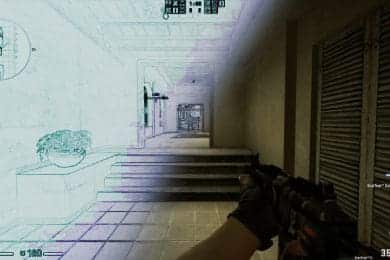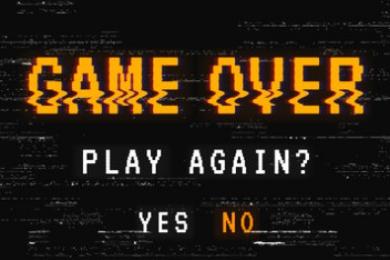Ever wonder what a Game Design Document (GDD) is or if you even need to make one? Well, I was planning on making a new game and was wondering if I should make one too. In this article, I will answer the question of what a GDD is and when you actually need one!
In short, a game design document is a blueprint for your game explaining what your game is about and the general features. It should include all the important details about your game, such as the plot, characters, gameplay, graphics, and features the game will have. Having a detailed GDD can help keep the development of the game focused and reduce the risk of scope creep.
What is a Game Design Document?
A game design document contains all the important details about your game, such as the features, plot, characters, gameplay, and graphics. It helps organize the overall vision of the game to have a better understanding of what needs to be done.
While a GDD is not required, it’s a good idea to create one before starting development on your game. This will help you stay organized and avoid any potential problems down the road – like scope creep! Without a GDD, you may experience problems during development, especially working in a team.
There are a few things to keep in mind when creating your GDD. First, you need to be clear about what your game is about and what you want players to do. Second, you need to make sure that all the gameplay mechanics work together and that they’re fun to play. Third, you need to make sure that your game looks good and is visually appealing. Lastly, you need to test your game thoroughly before releasing it to the public.
Once you have your GDD, you need to share it with your team so that everyone is on the same page. This way, everyone knows what the game is supposed to be about and how it should work. After your team has reviewed the GDD, you can then start working on the actual game development.
Don’t forget, as features change the document must be updated!
Is a Game Design Document Required For Game Development?
For larger games, a game design document is highly recommended as it lays out all the details of the games while describing the intent and maintaining the scope of the game. For smaller, personal game projects a GGD is not necessary as it can be more work to create a GDD than to make the game.
However, creating a quick one-page GDD for personal projects can be beneficial as it will get you ready for larger projects when one should be made.
How Long Should A Game Design Document Be?
A game design document should be as long as needed. While this may seem like a vague answer, the details needed to explain and convey what the game will differ between games.
There are one-page GDDs and GDDs that look like novels.
Here is an example of Diablo’s game design document. As you can see, it doesn’t go into detail about the functions of the game, it outlines the intent of the game. In two pages it walks through how the game is intended to play and even goes into marketing strategies on how the game will make money.
On the shorter side check out this one-page design document for the game Cube Land:

I can’t even read the language, but after some observations, I can still grasp what the concept of the game is by looking at the image.
Sometimes game concepts do not need a lot of explaining. For example, if I am making an FPS game, I don’t have to go into details about how an FPS game works. But, I should go into the mechanics, for example explaining if the projectiles will drop over a distance or be raytraced and instantly hit the target.
The Benefits of Having a Game Design Document
A game design document can be incredibly beneficial for a game development team. It helps to keep everyone on the same page and ensures that important details are not forgotten. Without a GDD, it is easy for chaos to ensue and for the game to veer off track. Having a GDD also allows for better communication between team members, as it provides a clear and concise overview of the game.
In short, a game design document is a valuable tool that can help you develop a better game. While it is not required, it is highly recommended, especially for larger projects.
What Should Be Included in a Game Design Document?
The content of a GDD will vary depending on the type of game you’re making. However, there are some essential elements that should be included in every GDD. These include:
- A brief overview of the game
- Game concept
- Target audience
- Genre
- The game world
- The game’s story
- Characters
- Gameplay/Mechanics
- User interface
- Graphics and art style
- Audio
- Development team or roles needed
This is a basic outline of what should be included in a GDD. Check out our game design document template to get started!
How to Create a Game Design Document
Now that you know what a GDD is and why you need one, it’s time to learn how to create one. Luckily, this process is relatively simple. Just follow these steps:
- Start by brainstorming the basics of your game. This includes the game’s concept, genre, target audience, and story.
- Once you have a good understanding of the game’s basic concept, it’s time to start fleshing out the details. Begin by creating a detailed description of the game world and story. Then, move on to the characters and gameplay.
- After you have all the important details nailed down, it’s time to start putting everything into a document. There are many different ways to format a GDD, so feel free to be creative. However, make sure that the document is easy to read and understand.
- Once you have a finished game design document, share it with your team and get feedback. This will help ensure that everyone is on the same page and that there are no major holes in the design.
- Make sure to revise the document as needed. As your game changes and evolves, so too should your GDD.
Creating a game design document may seem like a lot of work, but it’s essential for any serious game development project. By taking the time to create a detailed and well-organized GDD, you’ll be setting yourself up for success.
Final Thoughts
A game design document (GDD) is a great tool for keeping the game development phase on track and informing team members of the intent and direction of the game. There is no defined length for a GDD, but it should be as detailed as needed to convey the purpose and mechanics of the game.
It is good practice to create small, one-page GDDs for personal projects to build your skills in describing a game. This skill can especially come in handy at game jams!
When creating larger projects a GDD is important to keep the development of the game focused and prevent creep scope from occurring and help retain the intent of the game months or even years into development.


